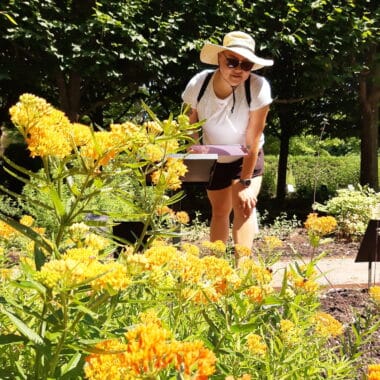
Pollinator species are crucial members of our ecosystems as they contribute to biodiversity and plant reproduction. Bees, butterflies, beetles, flies, wasps, and bats are all pollinators! Pollinators are vulnerable to climate change; therefore, it is necessary to do what we can to protect those who live alongside us and preserve an environment in which they can thrive.
On a sunny, low-wind, and reasonably cloudless day, when pollinators are most active at midday, flowers in bloom were observed in 5-minute intervals to record all pollinator interactions. Over the summer, more than 1000 pollinator interactions were recorded, with the most active pollinators being native bees, bumble bees, and flies.
This project allowed us to understand which pollinators are most active, their foraging habits in the Harriet Irving Botanical Gardens, and which flowers are preferred. Observations contribute data to the conservation of pollinator species and their habitats.
Savanna Francis
Savanna is a 3rd year student studying a double major in Biology and Environmental Science. This summer, she oversaw a pilot project monitoring flower and pollinator interactions in the Harriet Irving Botanical Gardens. This project is in partnership with two other botanical gardens – the Arnold Arboretum of Harvard University and the Missouri Botanical Garden.
Savanna says, “As a Mi’kmaw woman in science, it is incredibly important that I bring my Indigenous perspective to the work that I do and practice Etuaptmumk/Two-Eyed Seeing. Being able to contribute to the science is a huge aspect of research that I enjoy”.
Savanna is also grateful, saying “I want to thank Heather Mills and my community of Pictou Landing First Nation for supporting me and making this summer research opportunity possible”.
L’pa paqsitpi wela’lioq!


 Acadia University
Acadia University